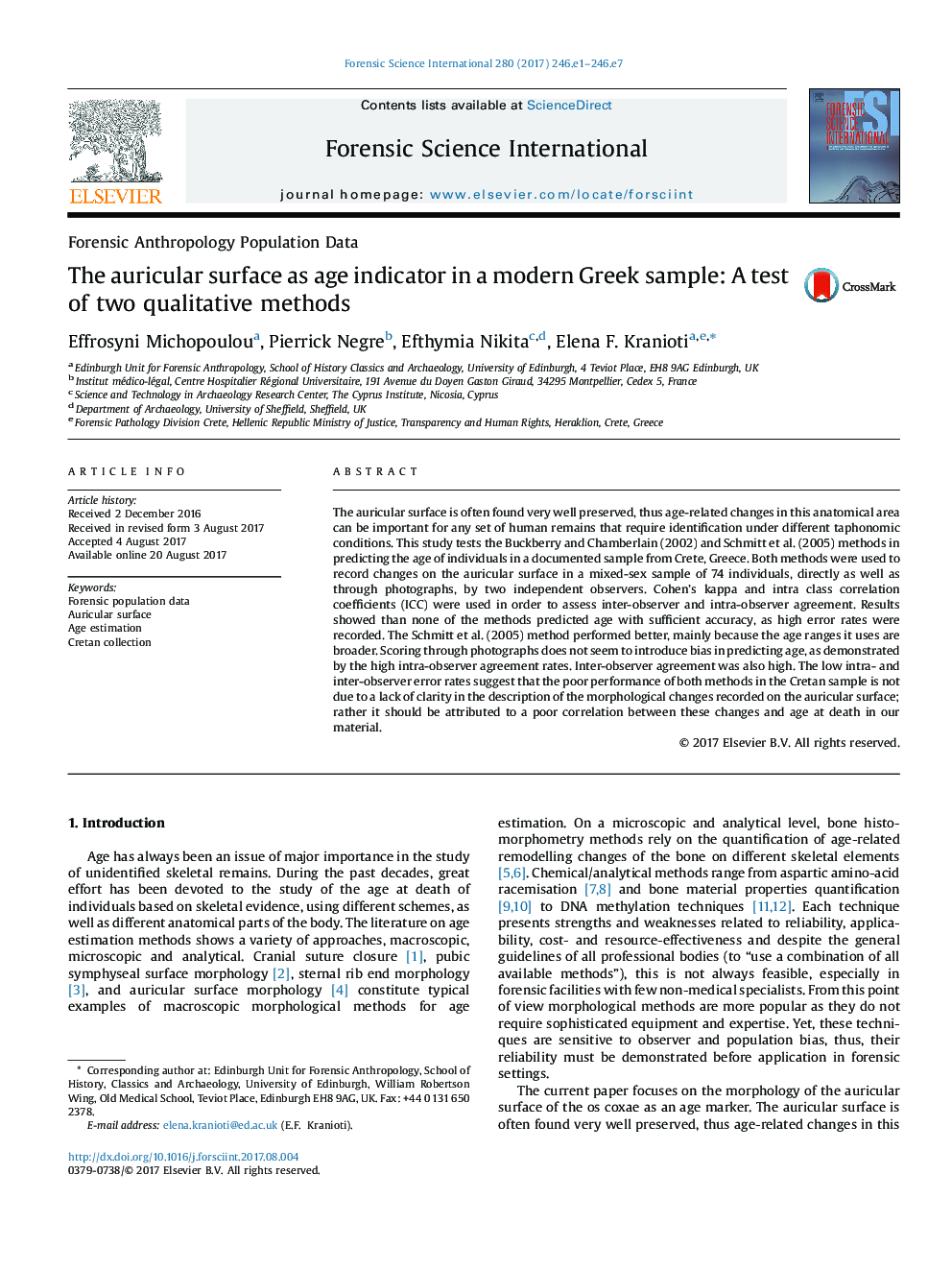| کد مقاله | کد نشریه | سال انتشار | مقاله انگلیسی | نسخه تمام متن |
|---|---|---|---|---|
| 6551514 | 1421970 | 2017 | 7 صفحه PDF | دانلود رایگان |
عنوان انگلیسی مقاله ISI
The auricular surface as age indicator in a modern Greek sample: A test of two qualitative methods
ترجمه فارسی عنوان
سطح حجیم به عنوان شاخص سن در یک نمونه یونانی مدرن: آزمون دو روش کیفی است
دانلود مقاله + سفارش ترجمه
دانلود مقاله ISI انگلیسی
رایگان برای ایرانیان
موضوعات مرتبط
مهندسی و علوم پایه
شیمی
شیمی آنالیزی یا شیمی تجزیه
چکیده انگلیسی
The auricular surface is often found very well preserved, thus age-related changes in this anatomical area can be important for any set of human remains that require identification under different taphonomic conditions. This study tests the Buckberry and Chamberlain (2002) and Schmitt et al. (2005) methods in predicting the age of individuals in a documented sample from Crete, Greece. Both methods were used to record changes on the auricular surface in a mixed-sex sample of 74 individuals, directly as well as through photographs, by two independent observers. Cohen's kappa and intra class correlation coefficients (ICC) were used in order to assess inter-observer and intra-observer agreement. Results showed than none of the methods predicted age with sufficient accuracy, as high error rates were recorded. The Schmitt et al. (2005) method performed better, mainly because the age ranges it uses are broader. Scoring through photographs does not seem to introduce bias in predicting age, as demonstrated by the high intra-observer agreement rates. Inter-observer agreement was also high. The low intra- and inter-observer error rates suggest that the poor performance of both methods in the Cretan sample is not due to a lack of clarity in the description of the morphological changes recorded on the auricular surface; rather it should be attributed to a poor correlation between these changes and age at death in our material.
ناشر
Database: Elsevier - ScienceDirect (ساینس دایرکت)
Journal: Forensic Science International - Volume 280, November 2017, Pages 246.e1-246.e7
Journal: Forensic Science International - Volume 280, November 2017, Pages 246.e1-246.e7
نویسندگان
Effrosyni Michopoulou, Pierrick Negre, Efthymia Nikita, Elena F. Kranioti,
